Over 60? These 5 Walking Tips Will Help You Lose Weight
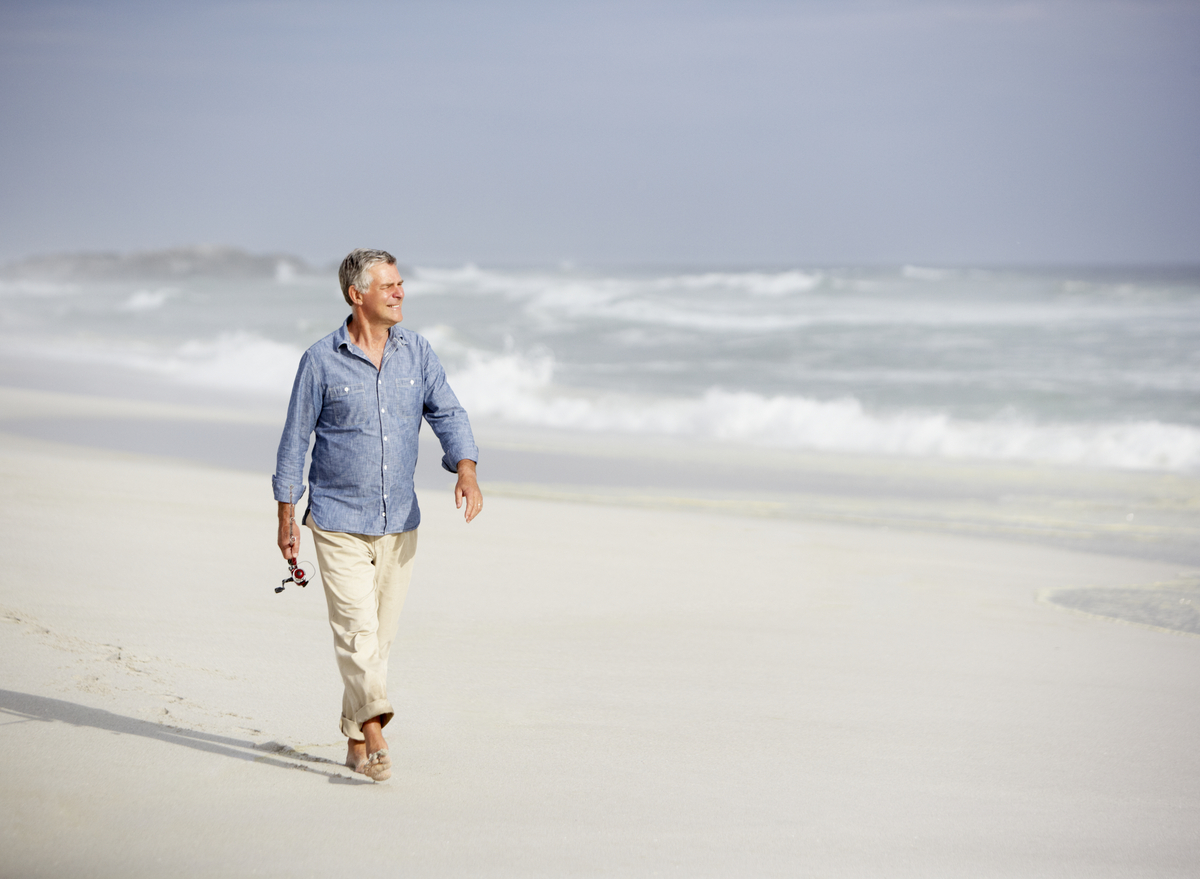
There’s an old saying that goes “youth is wasted on the young,” but perhaps it should actually go “exercise is wasted on the young.” Many older adults make the mistake of assuming they should avoid exercise past the age of 60, but that couldn’t be further from the truth. “There’s a powerful myth that getting older means getting decrepit,” Chhanda Dutta, Ph.D., chief of the Clinical Gerontology Branch at the National Institute on Aging, told WebMD. “It’s not true. Some people in their 70s, 80s, and 90s are out there running marathons and becoming body-builders.”
One study published in Age and Ageing surveyed over 400 older adults (ages 65+) on their exercise beliefs and habits. Despite 95% telling researchers that physical activity is beneficial, a significant portion (36%) admitted to engaging in absolutely no leisure-time exercise. The study authors also noted that most participants were either hesitant to exercise over injury concerns or complained of too many aches and pains holding them back.
Injury concerns and aching joints are of course valid reasons for any older individual to be skeptical about starting up a new fitness regimen, but a workout doesn’t have to be super intense or include weights to be effective. For example, walking has been shown time and time again to help promote weight loss and a lean, toned physique.
This research project published in Preventive Medicine found that a few half-hour walks per week cut down on body fat considerably and improved overall aerobic fitness among study subjects. Another study published in the American Journal of Sports Medicine reports that going for a daily walk for six months helped a group of women lose an average of 17 pounds.
Indeed, if you’re over 60 and looking to lose weight but don’t know where to begin, it’s truly as simple as putting one foot in front of the other. “If you are brand new to fitness walking, just walking at a steady pace for five to 20 minutes several days a week, or just five minutes several times a day, is a great start,” Dr. Lauren Elson, medical editor of the Harvard Special Health Report Walking for Health, tells Harvard. “But soon you will want to raise your routine to a higher level.”
Keep reading to learn about some surprising ways to get even more out of your walks and attain weight loss after 60. And for more, check out the 3 Major Secrets to Living to 99, According to Betty White.
Add some incline
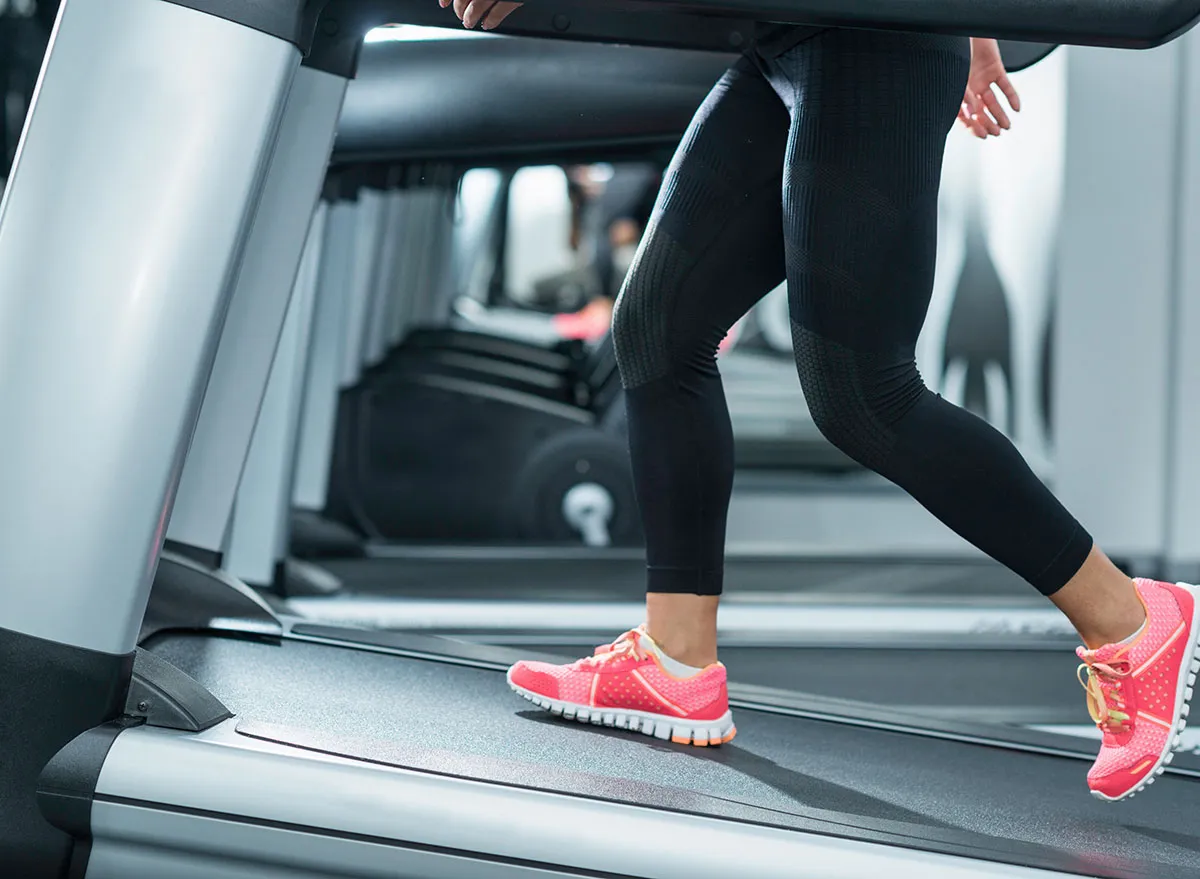
Feel like you’ve mastered flat-surface strolling? Add in some inclined steps to amp up the intensity. Climbing some stairs, walking up a hill, or just turning on the “incline” feature on a treadmill will all do the trick.
“Walking on flat ground is an incredibly energy-efficient activity,” explains Jordan Duncan, DC, MDT, a chiropractor and expert in pain science at Washington’s Silverdale Sport and Spine. “Our bodies have a unique ability to store energy during gait, for example in our tendons and myofascial slings, and then use that energy to help propel us forward. While this allows us to walk great distances with relatively minimal effort, we only burn about 100 calories per mile on average when walking on flat ground.”
According to Nutristrategy, while an individual weighing 150 pounds will burn about 267 calories during an hour of regular walking at a brisk pace, they’ll burn 422 calories if they spend the same period walking uphill.
Related: Sign up for our newsletter for the latest health and fitness news!
Get a dog
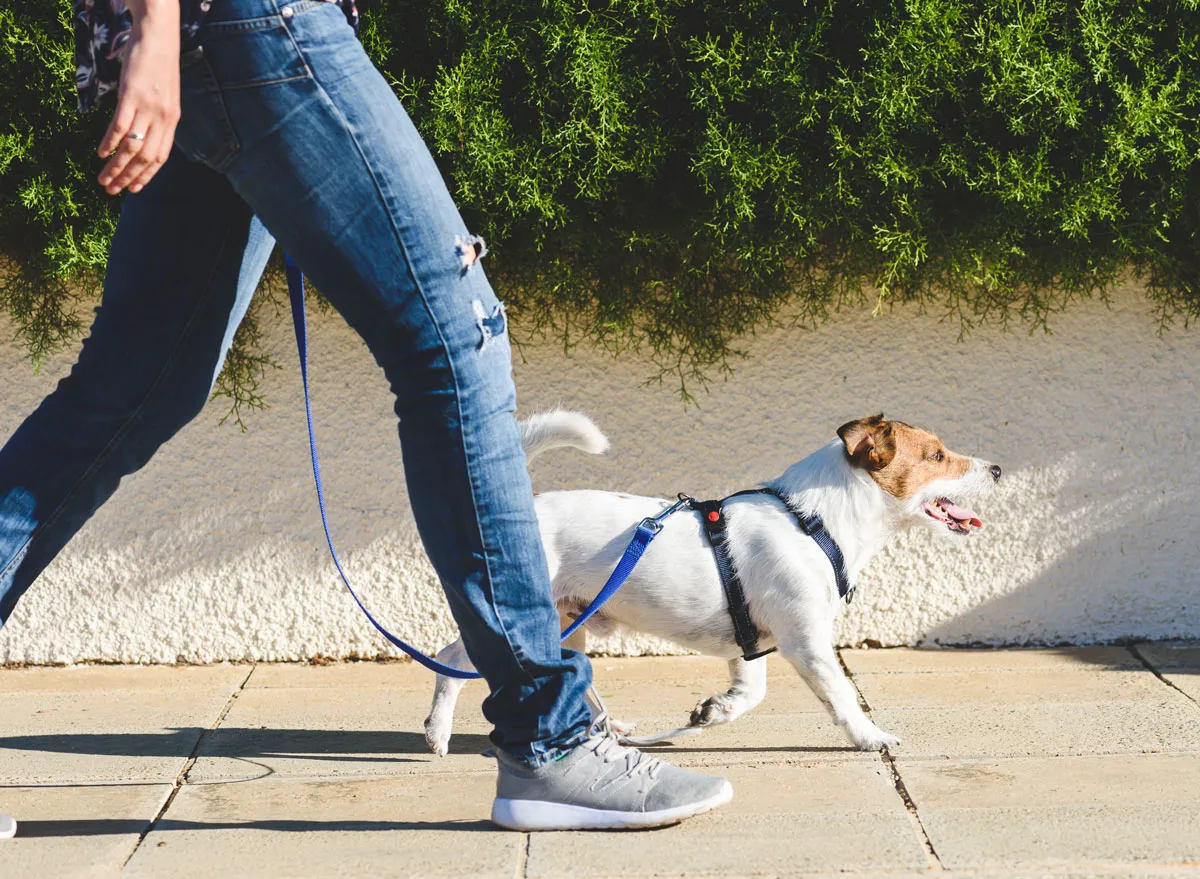
Adding a new pup into your life can bring a whole lot of joy and companionship, but our four-legged friends also need a whole lot of movement. That means getting a dog will help you exercise more and put to bed old excuses for staying on the couch. One survey of 2,000 dog-owners found that the average pup parent walks 1,000 miles per year with their dog! The poll noted that most dog owners take their pet out for a walk 10 times per week, with each stroll lasting just over a half-hour. Just think, by the time your new pup turns three you’ll have walked around 3,000 miles together!
Another study focusing specifically on older adults analyzed over 3,000 subjects before concluding dog-owners are consistently more active than non-dog-owners. “We were amazed to find that dog walkers were on average more physically active and spent less time sitting on the coldest, wettest and darkest days than non-dog owners were on long, sunny, and warm summer days,” comments study leader Andy Jones, a professor at the University of East Anglia.
Walk with purpose
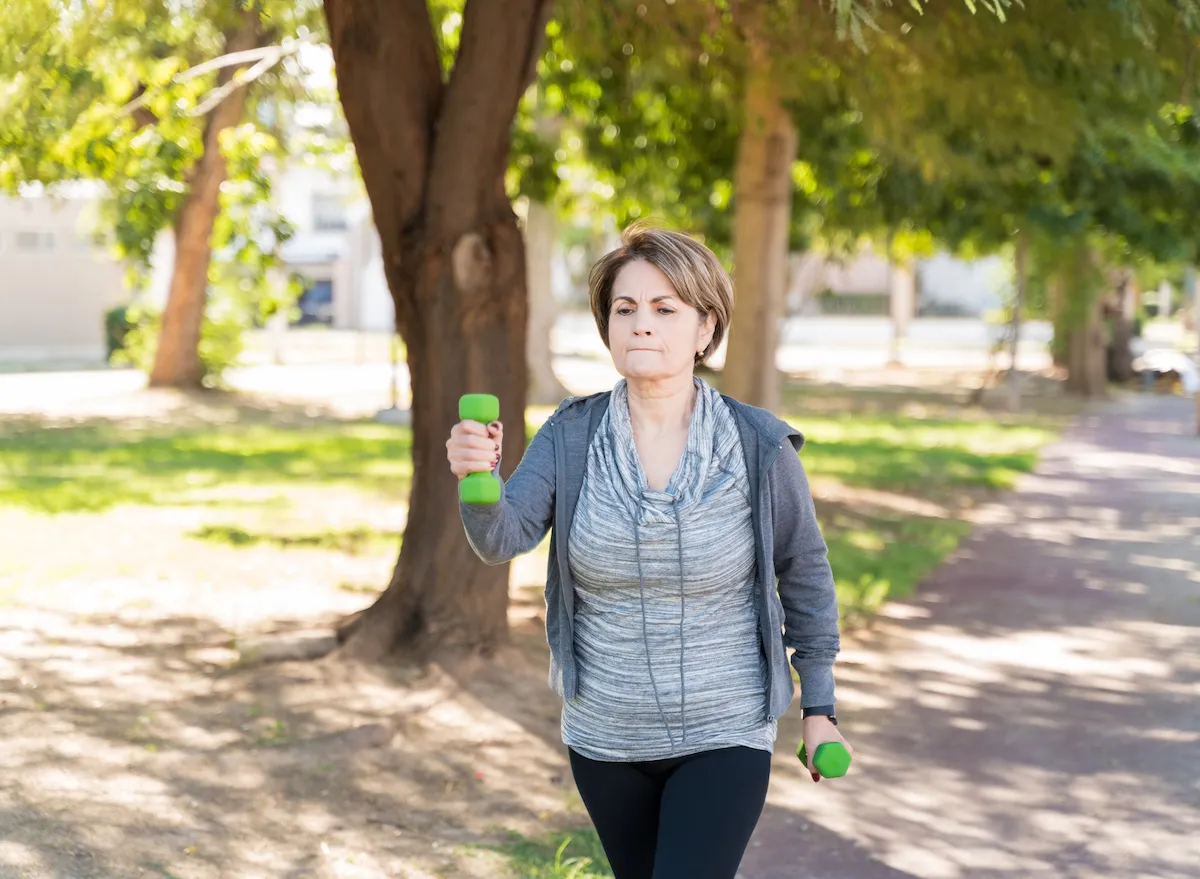
While there’s something to be said for walking around aimlessly in a carefree manner, one fascinating study featuring over 125,000 people indicates that it’s healthier to walk with a specific purpose in mind.
Published in the Journal of Transport and Health, the study finds that people tend to walk faster, feel healthier, and find it easier to get going if they’re walking for a specific reason. Commuting to work, for example. While most older adults don’t have to worry about work anymore, walking to the grocery store or to see friends at a scheduled time will work too.
“We found that walking for utilitarian purposes significantly improves your health and that those types of walking trips are easier to bring into your daily routine,” says Gulsah Akar, an associate professor of city and regional planning in The Ohio State University Knowlton School of Architecture.
Related: This Habit Can Sharpen Your Brain When You’re Older, Science Says
Up the intensity with intervals
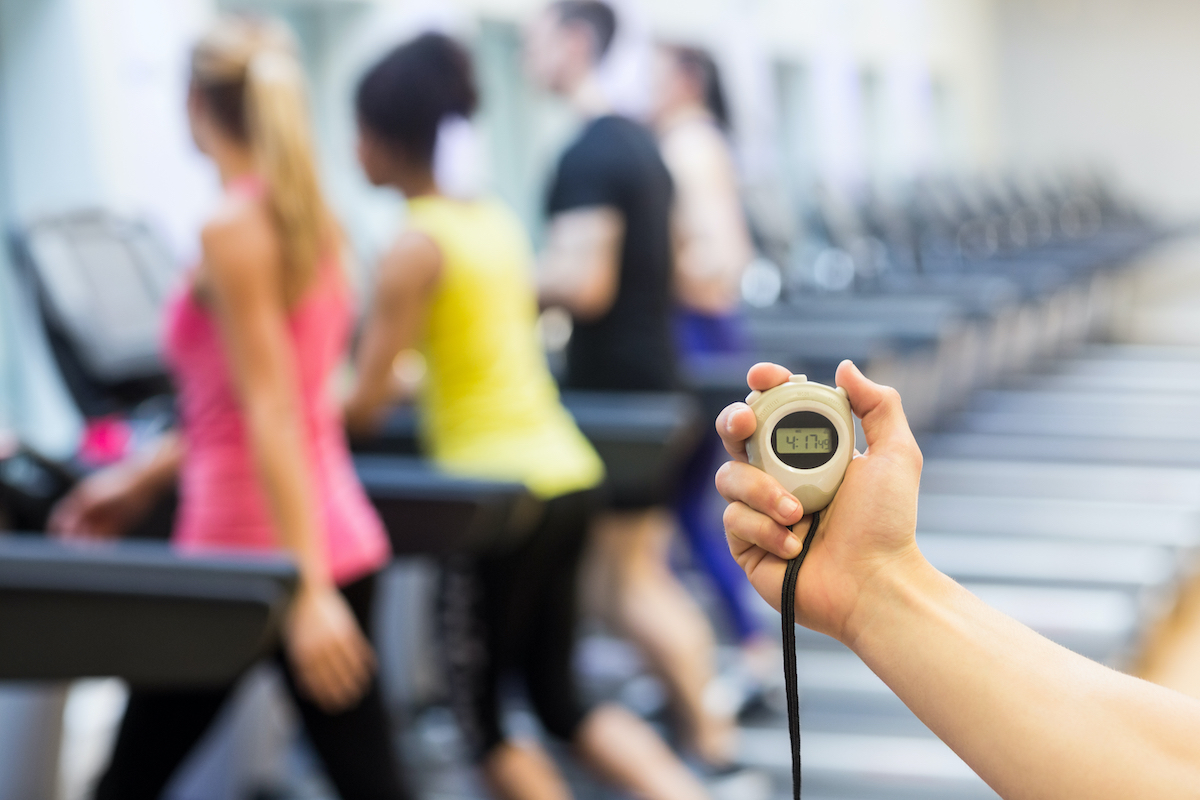
If you’re looking to push yourself a bit but don’t love the idea of climbing up a hill, consider adding some short intervals of increased speed. For instance, walk at your usual pace for five minutes, then walk at a brisker speed for 45 seconds before repeating the cycle another few times. This will both increase your heart rate and burn more calories.
Moreover, research published in Cell Metabolism discovered that interval training (walking, cycling) helped a group of older adults (ages 65-80) actually reverse some old-age-related muscle deterioration on the cellular level. In this way, interval walking can help older individuals both burn fat and maintain lean muscle mass.
Don’t forget headphones
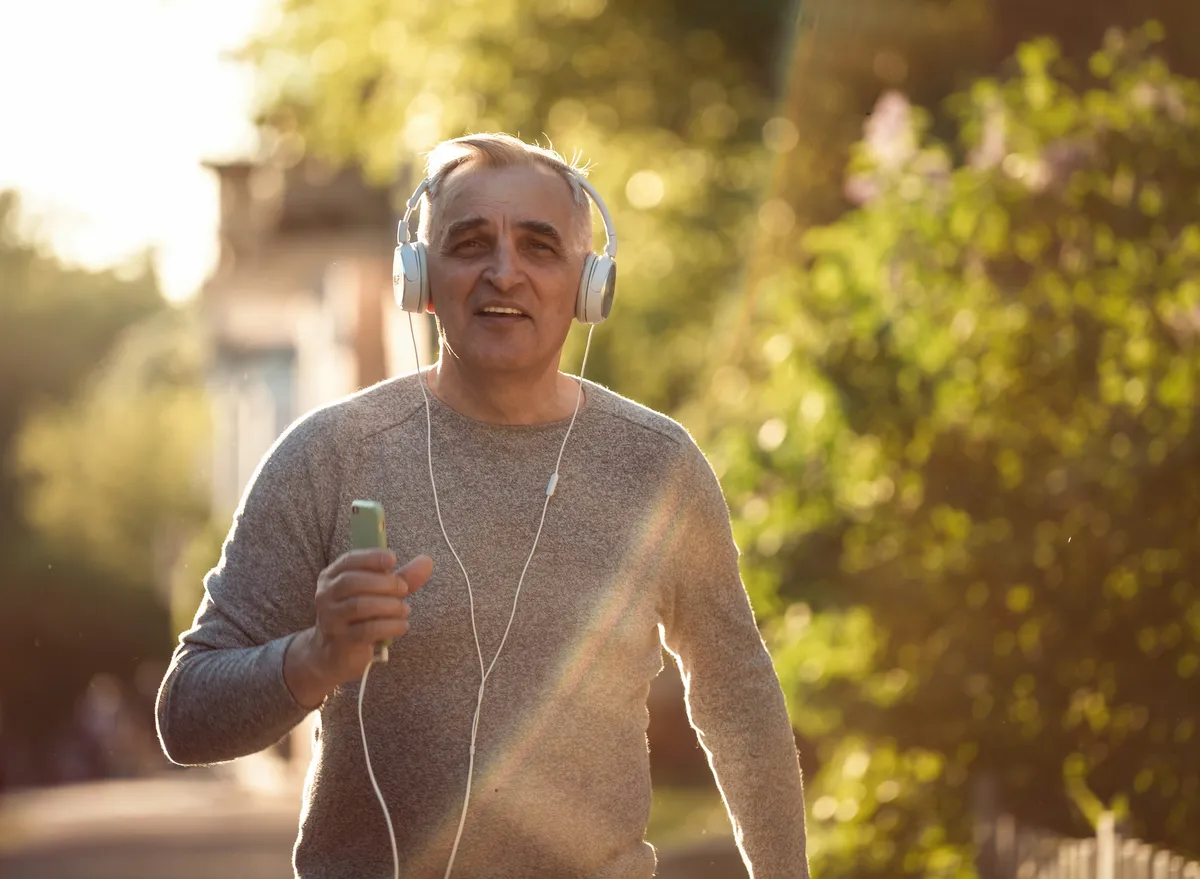
The next time you’re close to skipping a walk, try popping in some headphones and throwing on your favorite tunes. Plenty of research suggests music can help us overcome fatigue, exercise longer, and enjoy movement more. One study from The American College of Cardiology found that listening to up-beat music helped a group of subjects work out for a longer period.
Another study reports that music can even help us overcome mental exhaustion. Participants were asked to go for a run after completing a challenging cognitive test. Across the board subjects were able to overcome their mental fatigue and run at their usual pace if they were allowed to listen to music. Without music, though, performances suffered.
“The findings indicate that listening to self-selected motivational music may be a useful strategy to help active people improve their endurance-running capacity and performance when mentally fatigued. This positive impact of self-selected music could help people to better maintain the quality and beneficial impact of their exercise sessions,” explains Dr. Shaun Phillips of the University of Edinburgh’s Moray House School of Education and Sport.
Considering that research focused on running, which is of course more strenuous than walking, there’s ample reason to believe music can help with walking performance and consistency as well.
For more, check out Over 60? Think Twice About Doing These Exercises.








